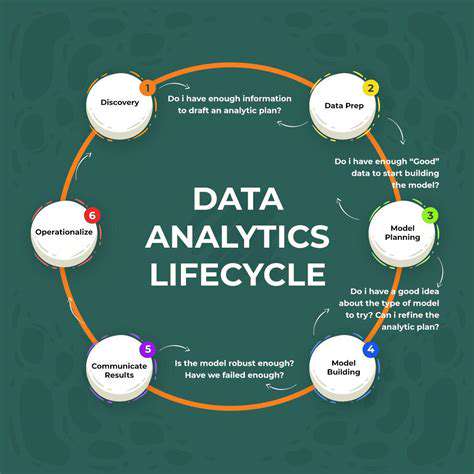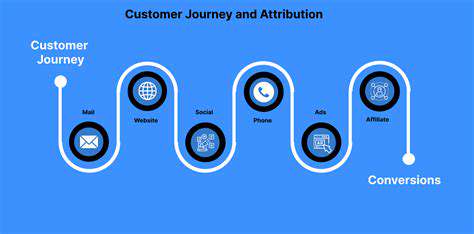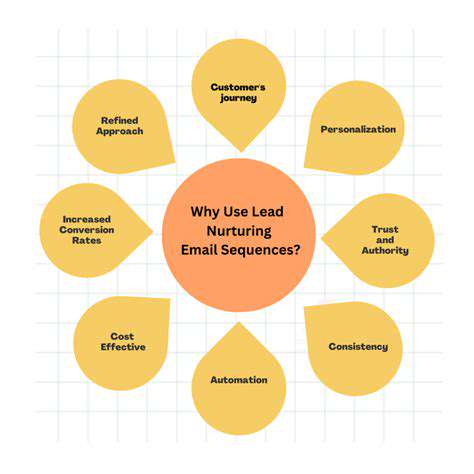Explaining Data Usage to Consumers: Transparency is Key
The Importance of Data Transparency in Today's Digital Age
Defining Data Transparency
Data transparency, in the context of data usage, refers to the clear and accessible disclosure of how data is collected, used, stored, and shared. It goes beyond simply stating that data is being used; it necessitates providing detailed information about the specific purposes of data collection, the types of data involved, and any potential impacts on individuals or groups. This includes outlining the methods used for data security and ensuring that individuals have the means to understand and challenge the data's application.
Transparency is crucial because it builds trust between data users and those whose data is being collected and analyzed. Without transparency, users may feel their privacy is being compromised, or that their data is being used in ways they don't understand or agree with. This lack of trust can lead to resistance, reduced participation in data-driven initiatives, and even legal challenges.
Benefits of Data Transparency for Users
When data practices are transparent, individuals gain a level of control and understanding over how their data is being used. This empowers them to make informed decisions about their participation in data-driven services and products. Transparency can also lead to increased user engagement and trust. Users can better assess the risks and benefits associated with data collection and use, allowing them to make more informed choices about how they interact with companies and services that collect their data.
Furthermore, transparency fosters accountability. Knowing how their data is being handled can give users the power to question and challenge practices they find questionable or unfair. This can lead to improvements in data protection and ethical data handling practices. Ultimately, transparency empowers individuals and promotes greater trust in the digital ecosystem.
The Role of Data Transparency in Ethical Data Practices
Ethical data practices are built upon the foundation of transparency. When data collection and usage are transparent, individuals can assess the ethical implications of the practices. This allows for a more just and equitable use of data, reducing the risk of discrimination, bias, or harm to individuals or groups. Transparency fosters a culture of accountability and promotes the responsible use of data.
Transparency and Data Security
Data transparency is intrinsically linked to data security. When data practices are transparent, individuals can understand how their data is protected and what measures are in place to prevent unauthorized access or misuse. This understanding fosters trust and encourages users to report any suspected security breaches or violations of data privacy.
Open communication about security protocols, data storage methods, and the steps taken to protect data from harm builds trust. Transparency in security measures allows individuals to make informed decisions about the safety of their data and encourages a more robust and proactive approach to data security.
Data Transparency and the Future of Data Usage
In today's increasingly data-driven world, data transparency is no longer a mere best practice; it's becoming a fundamental necessity. As data usage continues to evolve, transparency will be essential for maintaining trust, promoting ethical practices, and ensuring that data is used responsibly and effectively. The future of data usage depends on the ability of organizations and individuals to embrace and implement transparent data practices.
Moving forward, transparent data practices are crucial for fostering innovation, trust, and responsible data usage. Transparency is not just about disclosing information; it's about fostering a culture of openness, accountability, and ethical decision-making in the digital age.
The Role of Data in Personalized Experiences

The Foundation of Personalized Experiences
Data underpins the entire concept of personalized experiences. Without readily available and accurate data about individual users, businesses cannot tailor their offerings to specific needs and preferences. This data acts as the bedrock upon which personalized recommendations, targeted marketing campaigns, and bespoke customer service are built. Understanding user behavior, preferences, and demographics is crucial for crafting experiences that resonate with individual users.
The collection and analysis of data are essential to developing a deep understanding of the target audience. This allows businesses to adapt their strategies and create content that speaks directly to their customers' desires, fostering stronger relationships and driving engagement. Data analysis enables businesses to fine-tune their approach, maximizing the effectiveness of their efforts.
Data Collection Methods and Ethical Considerations
Collecting user data ethically and responsibly is paramount. Transparency about how data is collected and used is crucial for building trust with customers. Businesses should clearly communicate their data collection practices and obtain explicit consent for data usage. Different data collection methods, such as surveys, website tracking, and purchase history, each have unique ethical considerations. Transparency and user control over their data are key to maintaining trust and avoiding potential conflicts.
Implementing robust data security measures is equally important. Protecting user data from unauthorized access and misuse is essential to safeguard customer privacy. Compliance with relevant data privacy regulations, like GDPR, is critical to maintaining ethical practices.
Segmentation and Targeting for Effective Personalization
Categorizing users into segments based on shared characteristics is a critical step in personalized experiences. This segmentation allows businesses to tailor their offerings to specific groups, increasing the relevance and appeal of their products or services. Analyzing data to identify common traits, behaviors, and preferences enables businesses to develop targeted marketing campaigns that resonate with specific segments.
Personalization in Product Recommendations
Leveraging data to provide personalized product recommendations is a powerful tool for driving sales and enhancing customer satisfaction. By analyzing past purchase history, browsing behavior, and preferences, businesses can suggest products that align with individual needs and desires. This personalized approach often leads to higher conversion rates and a more positive customer experience.
Personalized recommendations create a more engaging and relevant shopping experience for customers. This proactive approach improves customer satisfaction and significantly increases the likelihood of a purchase.
Personalized Content and Communication
Personalization extends beyond product recommendations to encompass content and communication strategies. Tailoring content to individual interests and preferences can greatly improve engagement and drive conversions. By understanding user preferences, businesses can create targeted content that resonates with individual needs and desires. This personalized content strategy can significantly improve user experience.
Customizing communication, such as emails and in-app notifications, creates a more meaningful connection with customers. By using data to inform these communications, businesses can increase the likelihood of engagement and drive positive outcomes.
Measuring and Optimizing Personalized Experiences
Constantly monitoring the effectiveness of personalization efforts is crucial for improvement. Key metrics, such as conversion rates, engagement rates, and customer satisfaction scores, provide valuable insights into the success of personalized strategies. Analyzing these metrics helps businesses identify areas for optimization and refinement. By tracking these key metrics, businesses can continuously refine their strategies to maximize their impact.
A/B testing different personalization approaches allows businesses to compare variations and determine which strategies perform best. This iterative process of testing and refinement is critical for maximizing the effectiveness of personalized experiences.
The Future of Data-Driven Personalization
The future of personalization is intricately linked to advancements in data analytics and artificial intelligence. Emerging technologies like machine learning and AI will allow for more sophisticated and nuanced personalization strategies. As these technologies evolve, the ability to anticipate and cater to individual needs will become even more refined. Personalization will become increasingly sophisticated and tailored to the individual.
The constant evolution of data and technology will continue to drive innovation in personalization strategies. This will lead to a more seamless, engaging, and relevant experience for customers.
Navigating Data Privacy Policies and Settings
Understanding the Scope of Data Collection
Data privacy policies often detail the types of data a company collects, including personal information like names, addresses, and email addresses, as well as usage data such as browsing history and purchase patterns. Comprehending this scope is crucial for consumers to understand what information is being gathered and how it might be used. This understanding empowers informed choices about sharing personal data with companies.
It's important to note that the collection methods can vary significantly. Some companies rely on explicit consent, requiring users to actively agree to data collection. Others may use implied consent or default settings, which can be less transparent and raise concerns about data usage. Knowing the methods used is a key element in evaluating data privacy practices.
Understanding Data Usage and Sharing Practices
A critical aspect of navigating data privacy policies is understanding how the collected data will be used. Will it be used to personalize services, for targeted advertising, or for other business purposes? Companies often outline these uses in their policies and consumers should carefully review these provisions to assess the potential implications of their data being shared.
Beyond internal use, policies should also address the sharing of data with third parties. Consumers need to know with whom their data is shared and the purpose of that sharing. Transparency regarding data sharing practices is essential for building trust and ensuring data protection.
Accessing and Modifying Data Settings
Most platforms allow users to access and modify their data settings, providing control over the information collected and how it's utilized. Consumers should be able to review their personal data, request corrections, and potentially opt out of certain data collection practices. The ability to manage these settings is vital for exercising data control.
Understanding the process for accessing and updating personal data is key. This often involves navigating through privacy settings menus or using dedicated portals provided by the company. Familiarizing yourself with these procedures empowers you to maintain control over your data.
Seeking Clarification and Support
If consumers encounter ambiguities or have questions about a company's data privacy policy, seeking clarification is crucial. Companies often provide contact information for support or FAQs to assist in understanding complex provisions. Using these resources can help ensure a deeper understanding of how personal data is handled.
Don't hesitate to reach out to customer support if you need further assistance or have concerns. Companies should provide accessible channels for consumers to ask questions and get support related to their data privacy policies. This direct engagement fosters transparency and helps consumers feel empowered to protect their data.
Empowering Consumers with Data Control Options
Understanding Consumer Data Rights
Consumers are increasingly aware of the data companies collect about them and the potential implications of that data use. This awareness, coupled with evolving regulations like GDPR and CCPA, necessitates a transparent and user-friendly approach to explaining data usage. Understanding consumer data rights, such as the right to access, rectify, and delete personal data, is crucial for building trust and fostering a positive relationship with consumers. Companies need to clearly articulate what data they collect, how it's used, and what choices consumers have regarding its use. This proactive approach not only mitigates potential risks but also positions the company as a responsible steward of consumer information.
Different jurisdictions have varying regulations regarding data privacy. Companies operating in multiple regions must be prepared to adapt their data usage practices to comply with the specific laws and regulations of each location. This includes providing clear, concise, and culturally relevant explanations to consumers about their rights and choices. Failing to adequately address these nuances can lead to legal issues and reputational damage. A thorough understanding of these rights is essential for companies seeking to build lasting relationships with consumers grounded in trust and respect.
Providing Clear and Accessible Control Options
To empower consumers, companies must offer clear and accessible control options. This includes providing simple, user-friendly interfaces for consumers to review, update, and delete their data. A dedicated portal or section within a company's website, readily accessible to all consumers, should outline the types of data collected, how it's used, and the options available to consumers regarding that data. These options need to be easily understood and navigated, avoiding technical jargon or complex procedures.
Transparency is key. Clearly communicating the benefits and implications of different data control options is vital. For example, explaining how opting out of targeted advertising might affect the user experience or how accessing their data can help them understand how their information is used. This level of transparency fosters trust and empowers consumers to make informed decisions about their data. Companies should also be prepared to provide prompt and comprehensive support for consumers who need assistance navigating these control options.
Furthermore, companies should actively solicit feedback on their data practices and control options to ensure ongoing improvement. Regularly reviewing and updating these procedures based on user feedback and evolving regulations will help maintain a user-centric approach that respects and empowers consumers.
Offering multiple ways to exercise control options, such as through a mobile app, a dedicated website section, or even through direct communication channels, is important for catering to diverse user preferences and accessibility needs. This demonstrates a commitment to providing flexible and user-friendly choices.
Finally, clear and consistent communication about changes to data practices and control options is crucial. Keeping consumers informed about any updates to policies or procedures helps maintain trust and transparency in the long term.
Read more about Explaining Data Usage to Consumers: Transparency is Key
Hot Recommendations
- Personalizing Email Content with User Behavior
- Geofencing for Event Attendance Tracking
- Reputation Management on Social Media
- UGC Beyond Photos: Videos, Testimonials, and More
- The Future of Data Privacy Regulations
- Accelerated Mobile Pages (AMP) Benefits and Implementation
- The Future of CRM: AI and Voice Integration
- Google Ads Smart Bidding Strategies: Maximize Value
- Common A/B Testing Pitfalls to Avoid
- Local SEO Strategies for Small Businesses











